Potrebujeme váš súhlas na využitie jednotlivých dát, aby sa vám okrem iného mohli ukazovať informácie týkajúce sa vašich záujmov. Súhlas udelíte kliknutím na tlačidlo „OK“.
ASTM F3088-14
Standard Test Method for Use of a Centrifugation Method to Quantify/Study Cell-Material Adhesive Interactions
Automaticky preložený názov:
Štandardná skúšobná metóda pre použitie na odstredenia metódy pre kvantifikáciu / Študijný Mobilný-materiál Lepiace interakcií
NORMA vydaná dňa 1.5.2014
Informácie o norme:
Označenie normy: ASTM F3088-14
Poznámka: NEPLATNÁ
Dátum vydania normy: 1.5.2014
Kód tovaru: NS-54924
Počet strán: 7
Približná hmotnosť: 21 g (0.05 libier)
Krajina: Americká technická norma
Kategória: Technické normy ASTM
Kategórie - podobné normy:
Anotácia textu normy ASTM F3088-14 :
Keywords:
cell adhesion assay, centrifugation, chondrocytes, monolayer culture, serial passage, tissue culture-treated polystyrene, ICS Number Code 11.100.99 (Other standards related to laboratory medicine)
Doplňujúce informácie
| Significance and Use | ||||||||
|
4.1 This test method describes a cell adhesion method that can be used to provide a detachment percent at a given RCF for cells that have adhered to a substrate, typically for a short time. The information generated by this test method can be used to obtain a semi-quantitative measurement of the adhesion of cells to either an uncoated or pre-coated substrate, when compared to a reference (adherent) cell type on the same substrate. As described in Reyes and Garcia (2003), it is recommended that the 50 % point be used for either ligand concentration or RCF for the most robust measurement of adhesion strength. The adhesion may vary due to changes in the phenotype of the cells or as a result of the specific properties of the surface. The substrate may include tissue culture-treated polystyrene, biomaterials or bioactive surfaces. If the substrate is a hydrogel, care must be taken to avoid cohesive failure in the hydrogel (that is, detached cells have pulled away fragments of gel). The coating may consist of (but is not limited to) the following: natural or synthetic biomaterials, hydrogels, components of extracellular matrix (ECM), ligands, adhesion or bioactive molecules, genes or gene products. Cell concentration is also critical, as use of too high a concentration of cells may result in cells detaching as a sheet, rather than as individual cells. This centrifugation approach, once validated, may be applicable for quality control (QC) and product development. However, until the method is correlated to other measures of cell attachment, the current method should be run in parallel with other known measures of cell adhesion. 4.2 This test method does not cover test methods to quantitate changes in gene expression, or changes in biomarkers, as identified by immunostaining. This test method additionally does not cover quantitative image analysis techniques. In some cases the change in adhesive properties may reflect on the degree of differentiation or de-differentiation of the cells. However, it is worth noting that adhesive interactions do not necessarily reflect the differentiation state of a particular cell type, although in many instances they do. (See X1.3 for application to the Adhesion of Chondrocytes.) |
||||||||
| 1. Scope | ||||||||
|
1.1 This test method covers a centrifugation cell adhesion assay that can be used to detect changes in adhesive characteristics of cells with passage or treatments. This approach measures the force required to detach cells from a substrate. Adhesion, among many variables, may vary due to changes in the phenotype of the cells. 1.2 This test method does not cover methods to verify the uniformity of coating of surfaces, nor does it cover methods for characterizing surfaces. 1.3 The cells may include adult, progenitor or stem cells from any species. The types of cells may include chondrocytes, fibroblasts, osteoblast, islet cells, or other relevant adherent cell types. 1.4 This test method does not cover methods for isolating or harvesting of cells. This test method does not cover test methods to quantitate changes in gene expression, or changes in biomarker type or concentration, as identified by immunostaining. Nor does this test method cover quantitative image analysis techniques. 1.5 This standard does not purport to address all of the safety concerns, if any, associated with its use. It is the responsibility of the user of this standard to establish appropriate safety and health practices and determine the applicability of regulatory limitations prior to use. |
||||||||
| 2. Referenced Documents | ||||||||
|
Podobné normy:
Historická
1.3.2011
Historická
1.10.2013
Historická
1.3.2011
Historická
1.3.2012
Historická
1.2.2013
Historická
15.10.2010


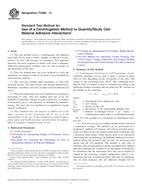
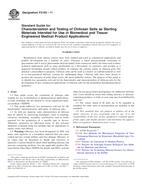 ASTM F2103-11
ASTM F2103-11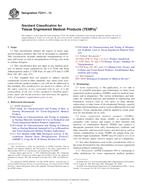 ASTM F2211-13
ASTM F2211-13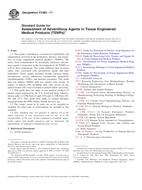 ASTM F2383-11
ASTM F2383-11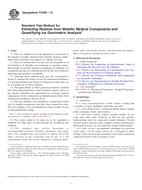 ASTM F2459-12
ASTM F2459-12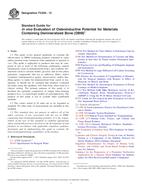 ASTM F2529-13
ASTM F2529-13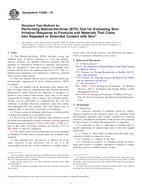 ASTM F2808-10
ASTM F2808-10
 Cookies
Cookies
